Robotics Education Journal
 09/28/2018
09/28/2018 $2Million 1st Prize!
Underground settings are becoming increasingly relevant to global security and safety. Rising populations and urbanization are requiring military and civilian first responders to perform their duties below ground in human-made tunnels, underground urban spaces, and natural cave networks. Current technologies fail to provide first responders with persistent situational awareness of the subterranean operating environments in which they must operate.
Beginning in the fall of 2019, DARPA will conduct a series of challenges in which teams will compete in underground robotics challenges for substantial cash prizes. The purpose is to develop novel approaches and technologies that will allow warfighters and first responders to rapidly map, navigate, and search underground environments. These diverse environments include
tunnels,
urban underground, and
cave networks
 09/15/2018
09/15/2018 In 1982, the DC-2 robot was making headlines for everything from participating in legal protests, to serving drinks in the Playboy Mansion, to being apprehended by the Beverly Hills Police Department in what was likely the first robot “arrest” ever. What happened?
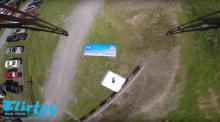 09/13/2018
09/13/2018 DroneDJ reported that Flirtey, a provider of drones and related technology, have worked with the city of Reno, NV to complete testing in a UAS Integration Pilot Program (IPP) that will save lives. In the test, a lone Flirtey pilot controlled multiple Flirtey drones in the delivery of automated external defibrillators (see white package floating downward). The FAA had granted a private waiver to allow operation of multiple drones by a single pilot. President Trump had earlier endorsed the IPP program (see photo).
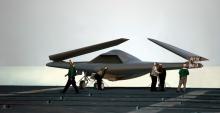 09/03/2018
09/03/2018 Thanks to CAPT Matt Scassero, University of Maryland UAS Test Team Director, and Fred McKee, both via CDR David Place (USN/Ret) davidplace47[at]gmail[dot]com for alerting us to this UAS faculty opening at the United States Naval Academy (USNA). This is a “dream job” for the right candidate—if you have the qualifications and interest, this may be for you!
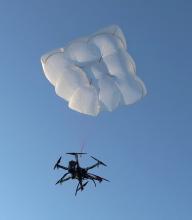 08/29/2018
08/29/2018 As the drone industry explodes in size, technology advances proliferate and acquisition costs for commercial drone service providers increase. In-flight failures become ever-more costly as drones and valuable payloads are lost. To enhance safety of bystanders on the ground and to minimize losses owing to point failures in complex drone systems, the Austrian company, Drone Rescue Systems (DRS), has developed an intelligent parachute rescue system for safe drone landings.
 08/26/2018
08/26/2018 Autonomy is multidisciplinary, multicultural, and global in its development and applications. Autonomous vehicles rely on communications, artificial intelligence, sensors, virtual and enhanced reality, big data, security, and many other technologies. Each year the annual meeting of the National Academy of Engineering highlights an engineering theme that is quickly developing in the world. The theme of the 2017 meeting was autonomy on land and sea and in the air and space. This publication summarizes the presentations and discussions from the meeting.
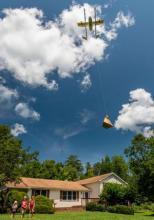 08/18/2018
08/18/2018 Project Wing completed the first long-distance, residential drone delivery in the United States. The drone provided an aerial delivery of ice cream and a Popsicle, a mere six minutes after a Wing technician confirmed the order through the company’s smartphone app.
The Smiths were part of a U.S. Federal Aviation Administration-approved test that for the first time allowed delivery flights over congested areas where people live, and ventured beyond the view of its operator on the ground. It was the most realistic public demonstration to date in the U.S. that people may someday get near instant purchases sent to their home by unmanned devices.
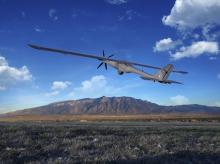 08/13/2018
08/13/2018 Albuquerque, New Mexico (July 25, 2018) – Silent Falcon UAS Technologies solar electric, fixed wing, long endurance, long range Unmanned Aircraft System (UAS) has been selected by DARPA as the unmanned aircraft system for its Stand-off Ubiquitous Power/Energy Replenishment - Power Beaming Demo (SUPER PBD). SUPER PBD is an innovative project designed to prove the feasibility of recharging an electric powered UAS while in flight using a laser light source, allowing for indefinitely long flight times by using concatenated “Fly” and “Fly & Charge” cycles removing the need to land to refuel.
The Silent Falcon™ UAS is uniquely suited for this important project as it is a proven solar electric powered system and the addition of the SUPER PBD capabilities builds on the established Silent Falcon™ solar electric technology. This is another important milestone for Silent Falcon™ as it continues to increase the deployment of its Silent Falcon™ UAS in a wide variety of commercial, public safety and military applications.
 08/04/2018
08/04/2018 The Naval Postgraduate School (NPS) is looking to create the nation’s only multi-domain distributed environment for integrated operational robotics experimentation and research. The Sea Land Air Military Research (SLAMR) Laboratory will consist of multiple robotics arenas (subsurface, surface, and aerial) within an enclosed netted structure. This facility will feature an enclosed UAV flying area, multiple pools for underwater testing, an operations center, workshop, and classroom facility.
 07/27/2018
07/27/2018 On Friday, July 13, drone pilot Luke Bannister achieved a new drone world speed record flying the Vodafone XBlades Wingcopter XBR Drone at the Goodwood Festival of Speed, Goodwood, U.K. The sUAS News reported that the Goodwood event celebrated its Silver Jubilee this year as the “world’s greatest celebration of motorsport and car culture.”
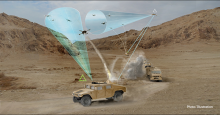 07/19/2018
07/19/2018 CR4ISRNET stated that the 2019 National Defense Authorization Act allocates funding for nearly three times as many unmanned vehicles as in previous years. Most of the drones are reportedly smaller, less expensive models. The Pentagon also plans to invest nearly twice as much on drone countermeasures as it spent in 2018.
 07/12/2018
07/12/2018 In a request for information released on July 6, the US Navy is seeking proposals for small and medium close-range armed unmanned aerial vehicles (UAV). The Naval Surface Warfare Center (NSWC) Crane Division is eyeing potential procurement of commercial off-the-shelf (COTS) UAVs that could carry small arms, rockets, grenades, and less-than-lethal weapons and devices.
The RFI states that the sought UAVs are those that are developed but not yet in production, but can reasonably be expected to be in the status of test-ready articles for comparative testing on or about April of 2019.
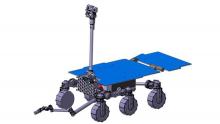 07/07/2018
07/07/2018 BBC.com news reported on a new rover design that will fetch “bottled” rock samples from a collection unit for transport back to earth, where scientists will analyze the specimens. The European Space Agency (ESA) has issued requests for proposals (RFPs) for bidding by contractors on the robot rover. The project has multiple phases over several years and is jointly supported by the ESA and NASA. The sample return gear will be sent to Mars to collect the samples in 2026. "It will be a relatively small rover - about 130kg; but the requirements are very demanding," said Ben Boyes who will lead the feasibility team at Airbus.
 07/03/2018
07/03/2018 On June 18, David Place, CDR (Ret.) USN, moderated an MIT Enterprise Forum on the topic of drones (UAVs) at the Knobbe Martens law firm in San Diego. A distinguished panel of leading experts discussed drone applications from commercial, military and technical perspectives. Their comments on the latest developments in drone technology in San Diego are extraordinarily interesting.
 06/26/2018
06/26/2018 In a conventional Wankel engine, a delta-shaped piston with a triangular profile rotates in an “epitrochoid” (figure-8 shaped) combustion chamber. Historically, Wankel engines experienced significant temperature differences in adjacent parts of the engine, arguably a sign of somewhat inefficient fuel combustion.
The piston in the new LiquidPiston Wankel design takes on the epitrochoid shape, and three independent combustion chambers more evenly distribute combustion heat across the entire motor. These innovations increase engine efficiency. The new LiquidPiston Wankel configuration also has more efficient side-seals that reduce leakage where the rotating Wankel piston touches the walls of the combustion chamber. . LiquidPiston believes the new design will help manufacturers potentially double drone flight times.
LiquidPiston engineers hollowed out the inside of the rotary piston to introduce a new cooling system, and developed two versions: one water-cooled and the other, air-cooled. As the figure 8-shaped piston (see photos) rotates inside the engine, air or water is pumped through the rotary piston to evenly cool the system. Fins on the exterior of the engine case further cool the system by radiating heat into the air.
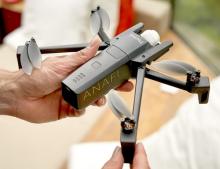 06/24/2018
06/24/2018 France-based Parrot unveiled its new Anafi, a foldable drone you can carry in a coat pocket that it is based on a “wish list of user feedback and a biomimetic design inspired by insects.” The Anafi packs a 4K HDR videocam plus a 21-megapixel gimbal-mounted still camera. With a duration of about 25 minutes, the drone is quieter than previous models.
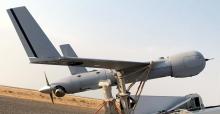 06/23/2018
06/23/2018 The AUVSI announced this week that the U.S. Department of the Interior (DOI) has awarded a “first-of-its kind” contract to Insitu, so that the company can provide fire suppression services within the contiguous 48 states and Alaska using its ScanEagle UAS. The UAS will help battle wildfires using geospatial mapping and full motion video. Through the contract, Insitu will support manned aerial operations for a variety of scenarios, including fire suppression, search and rescue, and emergency management, as needed on a “call when needed” basis.
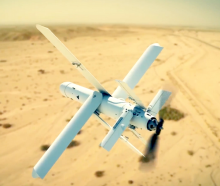 06/21/2018
06/21/2018 Weighing in at less than 7 pounds, the man-portable HERO-30 Short-Range Loitering System from Israel’s UVision (in partnership with Raytheon) is a new kind of robotic weapon—a loitering munition designed for use by infantry against individual human opponents. Azeri Defence reports that the system has a top speed of over 100mph, a 40km range and can loiter for 30 minutes. It can change its mission and abort an attack in mid-air.
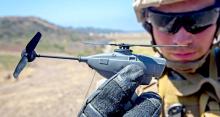 06/20/2018
06/20/2018 The Black Hornet robotic helicopter is the size and weight of a parakeet, shoots live video day or night, can stay aloft for 25 minutes and has a top speed of 13 mph. Tested in 2016 and 2017 by Special Forces units, this tiny robotic spy in the sky may be more broadly issued to troops in the field.
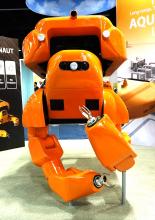 06/11/2018
06/11/2018 The Xponential 2018 national conference was held April 30 to May 3rd by the Association for Unmanned Vehicle Systems International (AUVSI) at the Colorado Convention Center in Denver.
In this gallery, you will find over 400 captioned photos of the most advanced robots and their allied support systems, on the planet.
 06/08/2018
06/08/2018 Microsoft recently placed a data center deep in the Scottish sea to test cooling the system with ocean water. The project is named Natick. It is not the first such test; previously, in 2015, Microsoft tested a submerged data center off the California coast for 5 months.
 06/02/2018
06/02/2018 In Vegas, nearly 50,000 workers serve meals, deserts and treats to gamblers, tourists and corporate bash attendees. Last week, the Culinary Workers Union voted to go on strike after June 1st, when contracts expire at 34 casino resorts.
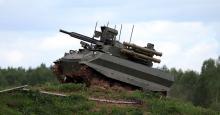 05/28/2018
05/28/2018 C4ISRNET reported on an unmanned robot tank fielded by Russia that apparently was tested in Syria. The Uran-9 has a 30mm cannon on a top turret and a small tracked chassis. A Russian news release notes, “The defense ministry announced that the robotic Uran-6 complexes designed for mine clearance were well-proven in Syria, as well as Uran-9 multifunctional reconnaissance and fire support system.”
 05/26/2018
05/26/2018 The Government Accountability Office (GAO) has released an official statement that urges the Federal Aviation Administration (FAA) to increase its oversight of risks associated with the operation of unmanned aircraft systems (UAS). The GAO has asked the FAA to create a mechanism “to ensure that FAA’s management of small UAS safety risks follows all applicable principles and requirements in the agency’s policies.”
At the Xponential 2018 show in Denver, CO, renowned German engine manufacturer3W, https://3w-modellmotoren.de/?lang=en, introduced a new single cylinder as well as a 2-cylinder piston engine to illustrate new power-plant customization options for far ranging unmanned aerial vehicles (UAVs). Options enable the operator to set engine performance characteristics to best match real world conditions. 3W also exhibited a full line of internal combustion 2-stroke engines, from 35cc up through 370cc.
